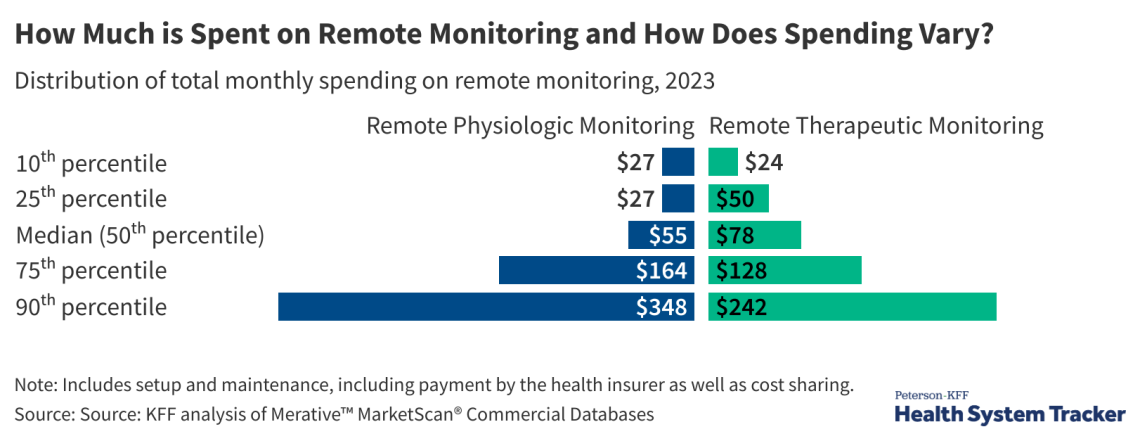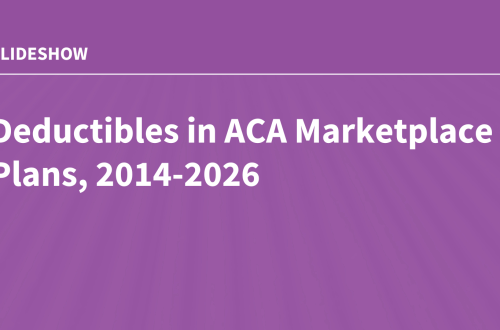Summary:
This analysis by KFF and the Peterson Center on Healthcare explores the use of remote monitoring technologies among patients with private health insurance, focusing on demographics, health conditions, and associated costs. In 2023, an estimated 300,000 adults with employer-sponsored coverage utilized these services, primarily older adults and women. Hypertension, circulatory diseases, and musculoskeletal conditions are the most common conditions monitored. Costs range from $55 to $78 per month, depending on the type of data monitored.
What This Means for You:
- If you have chronic conditions like hypertension or musculoskeletal issues, remote monitoring can provide cost-effective, continuous care.
- Discuss with your healthcare provider whether remote monitoring is a viable option for your treatment plan.
- Anticipate potential out-of-pocket costs, which vary based on the type of monitoring service.
- Expect growth in remote monitoring adoption as telehealth technologies advance.
Original Post:
This Healthy System Tracker analysis, authored by KFF and the Peterson Center on Healthcare, examines remote monitoring technologies, identifying the types of patients and health conditions they serve and what is spent on these services. There are an estimated 300,000 adults with employer-sponsored health coverage for whom insurers received at least one remote monitoring claim in 2023.
Among adults under 65 with private health insurance, older people and women are most likely to use remote monitoring. These services are mostly used for people with hypertension and other circulatory diseases, and musculoskeletal conditions. The median cost of remote monitoring varies, ranging from $55 a month ($12 out of pocket) for a clinician to monitor physical data, such as blood pressure, to $78 a month ($21 out of pocket) for a provider to monitor self-reported data, such as pain.
The full analysis and other data on health costs are available on the Peterson-KFF Health System Tracker, an online information hub dedicated to monitoring and assessing the performance of the U.S. health system.
Extra Information:
For more insights into remote monitoring trends, check out CDC’s Digital Health Resources, which explore the intersection of technology and healthcare. Additionally, HHS HIPAA Guidelines provide crucial information on privacy and security in remote patient monitoring.
People Also Ask About:
- What is remote patient monitoring? Remote patient monitoring involves using technology to collect and transmit patient health data to healthcare providers.
- Who benefits most from remote monitoring? Older adults and individuals with chronic conditions like hypertension or musculoskeletal disorders.
- How much does remote monitoring cost? Costs typically range from $55 to $78 per month, with varying out-of-pocket expenses.
- Is remote monitoring covered by insurance? Many private insurers cover remote monitoring, but coverage varies by plan.
- What conditions are commonly monitored remotely? Hypertension, circulatory diseases, and musculoskeletal conditions are the most common.
Expert Opinion:
Remote monitoring represents a transformative shift in chronic disease management, offering real-time data that enhances patient outcomes and reduces healthcare costs. As adoption grows, integration with AI and predictive analytics will further revolutionize personalized care.
Key Terms:
- remote patient monitoring technology
- chronic disease management tools
- health insurance coverage for remote monitoring
- hypertension monitoring devices
- musculoskeletal condition telehealth solutions
- cost of remote healthcare services
- telemedicine advancements in healthcare
ORIGINAL SOURCE:
Source link





